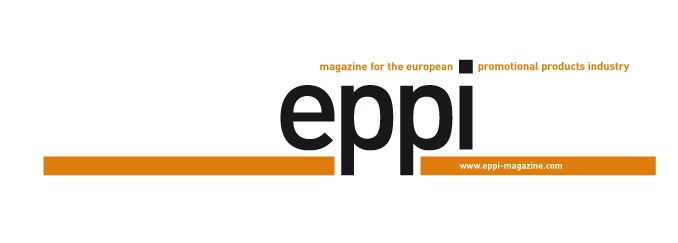Norway, a small, rich country covering a huge surface, offers a modestly sized, but well-developed promotional products sector that is characterised by a high price level and quality awareness. Good prerequisites for suppliers from the rest of Europe, who are prepared to face the special challenges of the Norwegian industry.
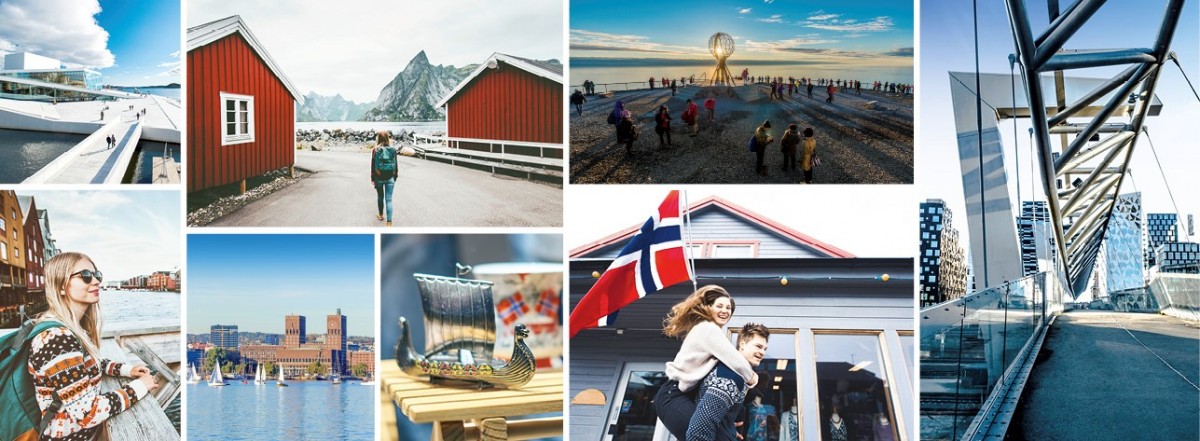
Anyone, who visits Norway for the first time, probably holds his breath at least twice – on the one hand because of the unique beauty of the nature, on the other hand because of the prices that are way above average compared to many countries. The fjord country is one of the richest countries in the world and has a corresponding lifestyle. This was by no means always the case: Norway was one of the poorest countries in Northern Europe not all too long ago and mainly lived from fishing, agriculture and forestry – until the first economically viable natural oil sources were discovered in 1969 and Norway was suddenly rolling in wealth. The country made an economic quantum leap and is meanwhile one of the most significant natural oil exporters worldwide. The Human Development Index of the United Nations has been classifying Norway as one of the furthest developed countries in the world for years and Norway also occupies one of the pole positions in the World Happiness Report of the United Nations every year, indeed in 2017 the country topped the rankings. However, among others the Norwegians are happier than the average because the government in Oslo cleverly invested the oil billions, instead of blowing it. In spite of this wealth in fossil fuels, the Norwegian petrol prices are exorbitant and the notorious taxes that the state imposes in many areas finance one of the worldwide leading health and social systems. Thanks to the Government Pension Fund, into which the state income from the oil business flows, every one of the 5.4 mil. Norwegians is theoretically speaking a millionaire. It is therefore logical that in view of the thriving economy, the market for haptic advertising is also flourishing. There are no reliable figures on the current turnover of the Norwegian industry, but the level of the promotional products market is high.
Whereas there are a host of large concerns within the Norwegian oil industry and other industries, small and medium-sized companies with the corresponding modest demand for promotional products dominate the scene. As in other parts of Scandinavia textiles play a major role – whether as workwear or in the scope of events, which follow each other thick and fast both in the winter sports and summer season. “20% of our turnover is made in the months May and June,” stated Lasse Lauritzen, IDE House of Brands. “During this period there is a continuous row of summer and vacation promotions, sports events and kick-off events. However the Christmas business is even more important – we make around 30% of our turnover at the end of the year.” That is namely when the Norwegian companies show their appreciation to their business partners and employees.
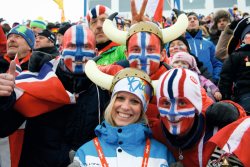 In a country large parts of which are covered in snow from autumn until the spring, it is not really surprising that the inhabitants know everything there is to know about the white dust. Indeed, the Norwegians are the world leaders in winter sport. Modern skiing has its origins in the Norwegian county of Telemark in the 19th century, but an ancient rock carving at Rødøy in Nordland county shows that Norwegians used skis as far back as 4,000 years ago. In the 1870s, Sondre Norheim from Telemark began using stiff ski bindings that enabled him to swing and jump without the risk of falling off. He also designed a “waisted” version, which was the prototype for the modern ski. The Holmenkollen Ski Festival, established in 1872, is the world’s oldest Ski event. Norway has won more medals in the Winter Olympics than any other country, with 368 to date since the first Winter Olympic Games in 1924. Recently at the latest Games in Pyeongchang, the country was able to set a new record after winning 39 medals. Norway itself has hosted the Winter Olympics twice: Oslo in 1952 and Lillehammer in 1988.
In a country large parts of which are covered in snow from autumn until the spring, it is not really surprising that the inhabitants know everything there is to know about the white dust. Indeed, the Norwegians are the world leaders in winter sport. Modern skiing has its origins in the Norwegian county of Telemark in the 19th century, but an ancient rock carving at Rødøy in Nordland county shows that Norwegians used skis as far back as 4,000 years ago. In the 1870s, Sondre Norheim from Telemark began using stiff ski bindings that enabled him to swing and jump without the risk of falling off. He also designed a “waisted” version, which was the prototype for the modern ski. The Holmenkollen Ski Festival, established in 1872, is the world’s oldest Ski event. Norway has won more medals in the Winter Olympics than any other country, with 368 to date since the first Winter Olympic Games in 1924. Recently at the latest Games in Pyeongchang, the country was able to set a new record after winning 39 medals. Norway itself has hosted the Winter Olympics twice: Oslo in 1952 and Lillehammer in 1988.
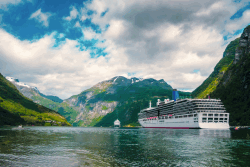 Anyone who hears the word Norway, probably immediately thinks of the unique coastal landscape of the Scandinavian country, of the fjords that one always wanted to see. The estuaries that extend deep inland along the Norwegian Atlantic Coast, which extends over a distance of around 25,000 km, are breath-taking and were declared as a World Heritage Site by UNESCO. Without the over 1,000 fjords the coast would only be 2,650 km long. The fjords were formed by valley glaciers that wandered seawards and their exceptional beauty is among others thanks to the steep rock faces that tower out of the sea up to heights of 1,400 metres and which in some cases form picturesque waterfalls. In 2006, National Geographic classified the most popular World Heritage Sites, the Norwegian fjords clearly topped the ranking against its fellow candidates including the Galapagos Islands, the Egyptian pyramids or the lost city of Machu Picchu.
Anyone who hears the word Norway, probably immediately thinks of the unique coastal landscape of the Scandinavian country, of the fjords that one always wanted to see. The estuaries that extend deep inland along the Norwegian Atlantic Coast, which extends over a distance of around 25,000 km, are breath-taking and were declared as a World Heritage Site by UNESCO. Without the over 1,000 fjords the coast would only be 2,650 km long. The fjords were formed by valley glaciers that wandered seawards and their exceptional beauty is among others thanks to the steep rock faces that tower out of the sea up to heights of 1,400 metres and which in some cases form picturesque waterfalls. In 2006, National Geographic classified the most popular World Heritage Sites, the Norwegian fjords clearly topped the ranking against its fellow candidates including the Galapagos Islands, the Egyptian pyramids or the lost city of Machu Picchu.
Small country, large distances
Trading in Norway means having to overcome significant distances – it is 1,572 km from Kristiansand in the South to Hammerfest, close to the North Cape. There are even important industry centres with the corresponding demand for haptic promotional products in the high North of the country. At the same time, the goods are mostly ordered from European importers and specialists or from the Swedish New Wave Group, which recently opened up a big warehouse in Norway. What is normal for promotional products distributors in West or Central Europe – ordering a customised batch of items from a supplier and receiving the goods within a few days – is hardly possible in Norway. On-site warehousing is thus just as indispensable for the distributors as having a printing partner close-by so that one is able to deliver goods short-term. That is the reason why printing service providers in Norway still have good order books in spite of the high wage costs. A few printers even stock products themselves in case they have to sell them to the promotional products distributors fast. “In the case of last-minute orders, the transport is always a risk,” said Sveinung Sve, Sve Profilgaver. “We use local service providers to be on the safe side, even if it is of course much more expensive than the big European importers with customising centres in Eastern Europe.”
Lively exchange
Companies that export promotional products to Norway, are supplying to a non-EU country which brings with it the corresponding obstacles. For instance the Norwegian legislation regarding product safety is even stricter than that of the EU. “Before the 2016 World Biathlon Championships in Oslo all of the promotional products were checked by the government,” reported Lauritzen, whose company was the official outfitter of the sports event. Hence, importers who certify their complete line-ups as far as possible are well-armed to set out on the Norwegian market. And this is extremely worthwhile for many suppliers, since the market offers high growth rates and customers, who are less interested in the price, but instead all the more in quality. “Many European suppliers are taking a close look at Norway – however to be successful there, one has to really know the market well,” explained Sve.
This market is shaped by distributors and agencies, many of whom are members in the NBR (Norsk bransjeforening for reklameprodukter) – an active industry association, which as well as organising two promotional products shows annually, also undertakes a number of other activities. “In the past, nobody knew anybody here. It is thanks to the association that we communicate with each other and help each other, there is a more active exchange in our country than anywhere else in Scandinavia,” reported Sve, who became Chairman of the NBR in 1994, ran the organisation for around a decade and co-shaped many initiatives. “Of course, there is competition, but it is of a friendly nature – the motto is getting better together and telling our customers what we are doing and can do.” For instance, when it comes down to increasing the market shares: “The market is pretty stable, there are very few fluctuations, at the most shifts in the budgets,” commented Sve. “Growth is hardly recorded – so we must increase the significance of promotional products in the marketing mix.” The latter is a task that distributor colleagues in probably every other European country are familiar with. The following pages explain how the Norwegian promotional products players are writing their own special success story and which peculiarities the promotional products market between Skagerrak and the Norwegian Sea has to offer.
// Till Barth
Interview with Thrine Bastiani, Chairwoman of the NBR
Norway has its own promotional products association called the NBR (Norsk bransjeforening for reklameprodukter). The Chairwoman, Thrine Bastiani, who is at the same time the managing shareholder of the promotional products agency Mint Profil og Reklame, talked to us about the structure and work of the association and the haptic advertising market in Norway.
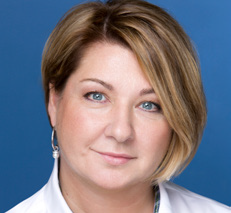
Thrine Bastiani
You are the chairwoman of NBR. Could you tell me some information about the association – how many members do you have, what is the association’s structure, what are your main activities?
Thrine Bastiani: NBR is a service organisation with 89 member companies – all of which are distributors. We focus on high quality products, ethical trade, competitive prices and precise deliveries. We also deal with competitive course, information on laws and regulations, CSR and compliance, sustainable development and sound environmental management. The board has five members from the industry, who perform their tasks in their free time since this is a voluntary position. The association organises the industry’s most important get-togethers, such as the NBR Fair in January and September every year, where we cooperate closely with all suppliers in the industry. There is also a very special collaboration between NBR and the suppliers, who have their own showroom in Oslo. Furthermore, we organise social activities in cooperation with our suppliers: Blekkspruten is an annual Gala event at which the industry’s most successfully companies and employees are distinguished – voted for by the industry itself. For anyone, who works in the promotional industry, Blekkspruten is a great event. It is funded by sponsors from our industry.
Are there any figures available for the Norwegian promotional market?
Thrine Bastiani: Unfortunately no, as our branch is registered with a general code, which includes a whole range of other types of industries, such as importing textiles, toys, advertising companies, public relations etc. This is a very important issue and we are working to find a solution for this, so that we can get hold of reliable figures.
How is the market in Norway doing at the moment?
Thrine Bastiani: The industry is progressing very positively, the economy in Norway is good, unemployment is low and companies are spending money on promotional articles and marketing. With a view to the popularity of product categories, it is still give-aways and loyalty products that seem to be number one, followed by sport articles and Easter, summer and Christmas Gifts. We still have a way to go to, when it comes down to increasing the relevance of haptic advertising in the marketing world, but the industry is working hard to deliver good quality products that reflect their customer’s image. The days when cheap and bad promotional products were sold are definitely over, customers demand quality for their money.
Which economic sectors are particularly good promotional products buyers?
Thrine Bastiani: When the country’s economy is doing well, it is difficult to identify individual industries, but the fishing, construction, oil and energy industries including their suppliers, as well as the banking and financial sector are typically good customers.
Are promotional products restricted by taxes?
Thrine Bastiani: For hardware or textiles we have an ordinary VAT rate (called Merverdiavgift, in short: MVA in Norway) of 25%, for food it is 15%. We have a huge sugar fee for all imports of sweets: Per kilo of the product’s taxable weight, 7.93 Norwegian Crowns (approx. 83 Cents) of tax is incurred, which means it has been much more expensive to import chocolate and sugar products.
One of NBR’s activities is the NBR show. What function does it fulfil for the Norwegian industry?
Thrine Bastiani: Norway is a small country, but there are large distances. Our industry is all over the country and when we all meet twice a year for the fairs, it is important to offer arrangements that are as efficient and variable as possible. Suppliers that don`t have their own showroom can meet the whole industry in two action-packed days. Everyone who visits the fair is a potential buyer, as we all are looking for that special product that will be a success. I would definitely recommend that foreign companies take part at the NBR Fair. It is a good investment and it will give them the unique possibility to meet distributors from all over the country. In spite of us being rivals, we cooperate jointly on the most effective exhibition by arranging bus transport between the different locations and organising a joint get-together party. There is a great, friendly atmosphere within our industry, which I really think is unusual and fantastic.
// Till Barth spoke to Thrine Bastiani.
photos: NBR (1); Shutterstock.com (10)


